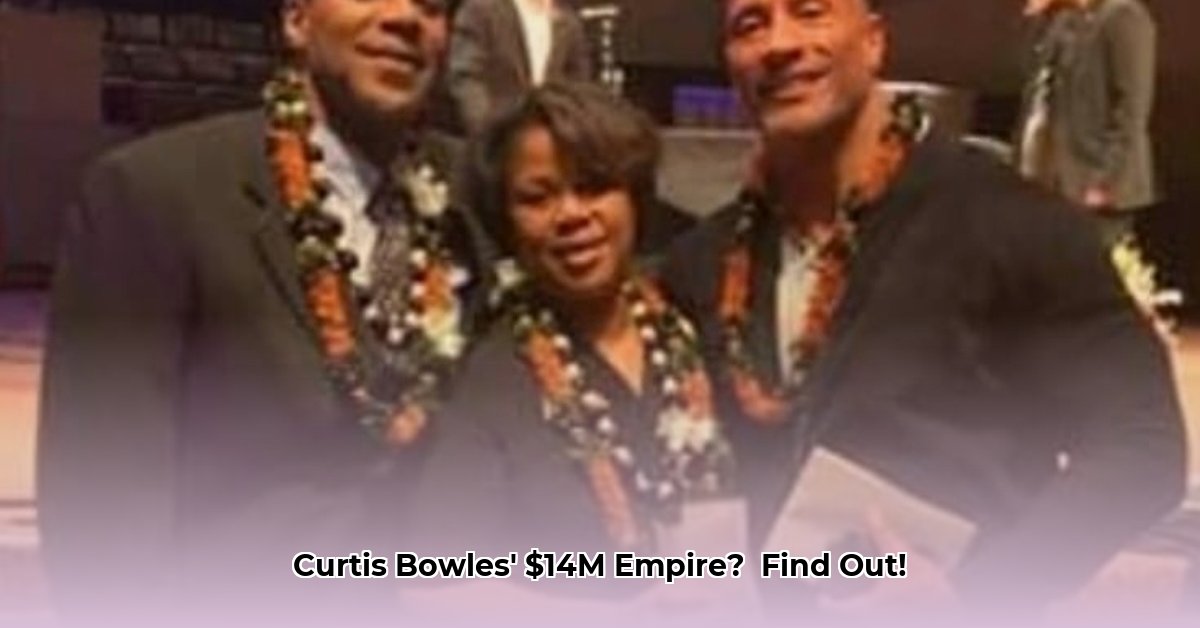
Curtis Bowles Net Worth: A Case of Conflicting Estimates
Determining the precise net worth of Curtis Bowles presents a significant challenge. Available information paints a picture of a successful entrepreneur with diverse income streams, but substantial discrepancies exist between reported figures. While some sources suggest a net worth as high as $14 million, others propose a considerably lower valuation, highlighting the difficulties inherent in assessing the wealth of private individuals.
Unraveling the Discrepancies: Sources and Limitations
The primary source of the $14 million estimate (Source A) emphasizes Bowles' astute investments in real estate, technology (especially cybersecurity), and a thriving consulting business. This source further predicts a substantial increase in his net worth in the coming years, potentially reaching $20–$25 million due to projected success in the green technology sector. However, a contrasting source (Source B) offers a much lower valuation, highlighting the wide range of estimations.
This stark difference underscores the significant challenges in accurately determining the net worth of private individuals. Without access to Bowles' personal financial records—information typically unavailable to the public—any estimate remains speculative. The lack of transparency makes definitively confirming any particular figure impossible.
Analyzing Potential Income Streams: A Tentative Overview
Source A suggests several potential sources of Bowles' wealth:
- Real Estate Investments: Early success in the real estate market appears to have provided a foundational base for his wealth accumulation.
- Technology Investments: Strategic investments in promising tech companies, particularly in the cybersecurity sector, likely contributed significant returns.
- Consulting Business: Annual revenue exceeding $3 million from his consulting firm constitutes a major component of his potential income.
It is crucial to reiterate, however, that these figures are based solely on the assertions of Source A and lack independent verification. While suggestive, they do not provide definitive proof of Bowles' actual financial standing.
Future Projections: Uncertainty and Volatility
Source A's prediction of substantial future wealth growth hinges on the success of Bowles’ investments in sustainable technologies. It's critical to emphasize the inherent volatility of the market. The outcome of these investments remains uncertain, making any long-term projection highly speculative.
Conclusion: The Elusive Nature of Private Wealth
Precisely determining Curtis Bowles' net worth is currently impractical. While available information suggests significant financial success, the lack of publicly available financial data leaves substantial room for uncertainty. Any reported figure should therefore be treated as an educated estimate, not a confirmed fact. Greater transparency is necessary to provide a more definitive assessment.
How to Verify the Net Worth of a Private Individual: Challenges and Strategies
Key Takeaways:
- Accurate net worth verification for private individuals is extremely difficult.
- Publicly available information serves as a starting point, but rarely provides a complete picture.
- Specialized financial databases and thorough investigative techniques are often required.
- Legal and ethical constraints strictly limit access to sensitive financial information.
- Valuation methodologies vary, leading to significant discrepancies in estimations.
The Complexity of Wealth Valuation: Why Precision is Elusive
Accurately determining an individual's net worth, even for well-known figures, presents substantial challenges. Publicly available information often offers only a partial and often outdated view of a person's assets and liabilities. Assets such as private company holdings, exclusive real estate holdings, or art collections are often not publicly disclosed, making precise calculations impossible.
Utilizing Publicly Available Information: A Limited Starting Point
Information gleaned from public sources such as property records, business registrations, and news articles offers a glimpse into an individual's financial situation, but only a very limited one. Such data is often incomplete, outdated, or simply unavailable, leaving significant gaps in the information needed for a complete picture.
Specialized Databases and Investigative Approaches: Deeper Insights
Accessing specialized financial databases and employing investigative techniques may yield more comprehensive information. However, this access typically comes at a considerable cost, and stringent legal and ethical considerations must be carefully observed. Private investigators may utilize advanced methods, but ethical and legal limitations often restrict the scope of their investigations.
The Challenges of Asset Valuation: Methodologies and Fluctuations
Even with comprehensive data, valuing various assets consistently remains problematic. Different valuation methodologies lead to discrepancies, and the value of many assets, especially illiquid ones, fluctuates significantly. Consistent valuation is rarely possible.
Building a Credible Net Worth Estimate: A Step-by-Step Approach
A reliable estimate requires a comprehensive approach:
- Gather Public Information: Begin by compiling publicly available data, including property records and business filings.
- Utilize Specialized Databases (if feasible): Leverage paid access to financial databases containing more detailed, often private, information.
- Analyze Asset Types: Carefully identify and assess the various types of assets held (real estate, stocks, private businesses, etc.).
- Apply Valuation Methods: Use established valuation methods for each asset type, recognizing the potential for discrepancies between methods.
- Account for Liabilities: Deduct outstanding debts and liabilities (mortgages, loans) to determine a net worth figure.
- Transparency in Uncertainty: Acknowledge the inherent limitations and uncertainties involved in the estimation process. Transparency is crucial to establishing credibility.